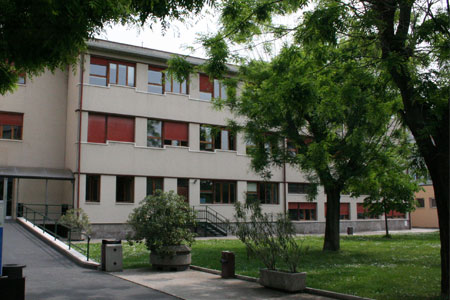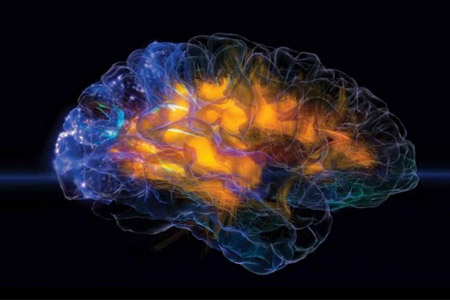Action potentials, besides being a basic signal for the communications of the nervous system (NS), also exert an instructive role
during the development and the modulation of the efficacy of the synaptic connections (Katz and Shatz 1996; Milner et al. 1998).
The topic of our first project is related to the role of the action potentials role in learning processes. The most accredited
experimental models of synaptic plasticity that may underline learning (Milner et al. 1998) are the so called Long Term Potentiation
(LTP, (Bliss and Lomo 1973)) and Long Term Depression (LTD, (Dudek and Bear 1992)). They relate to the permanent
modifications of synaptic efficacy whenever synapses have undergone proper activation. Both LTP and LTD may saturate their
effects resulting in an occlusion of further modulation of the synaptic function. To answer this question a homeostatic mechanism
has been proposed (Bienenstock et al. 1982) according to which the control of plasticity is exerted by the average frequency of
post-synaptic action potentials (post-synaptic firing, PF): the higher the PF, the lower the probability of inducing LTP and, at the
same time, the higher that of inducing LTD. This theory, although it has been supported by in vivo and in vitro population
recordings (Huang et al. 1992; Kirkwood et al. 1996; Wexler and Stanton 1993) is still lacking a direct description at the single
neuron level. We plan to specifically investigate the negative feed-back effect of PF on synaptic plasticity at the single CA1
pyramidal neuron level.
Our second project aims at investigating the role of firing pattern in the process of synapse competition and elimination during
development. We will use the neuromuscular junction as a convenient model for chronic in vivo manipulations. Muscle fibers are
innervated by multiple axons at birth but soon afterwards the redundant inputs compete with each other until only one remains, thus
establishing the adult innervation pattern (Brown et al. 1976; Redfern 1970). Electrical activity exerts a major role in the process,
since neuromuscular paralysis prevents the elimination (Benoit and Changeux 1975; Jansen and Fladby 1990; Thompson et al.
1979) whereas an artificially induced increase of activity accelerates it (Thompson 1983). We recently demonstrated that also an
artificially induced synchronous firing pattern of the nerve endings is able to prevent synapse elimination (Busetto et al. 2000). In
another investigation we found that motoneuronal spontaneous activity is synchronized at perinatal age, thus probably favoring in
the embryonic life the formation of multiple inputs on myofibers, while it desynchronizes soon after birth, leading to elimination of
redundant inputs (Buffelli et al. 2002). These experiments show that the process of synaptic competition is driven by the precise
firing pattern of inputs converging onto the same muscle fiber and not just by the amount of total activity. We now intend to further
elucidate the process with the direct demonstration that the elimination of redundant inputs is caused by an asynchronous firing
pattern of the competing neuromuscular inputs.







